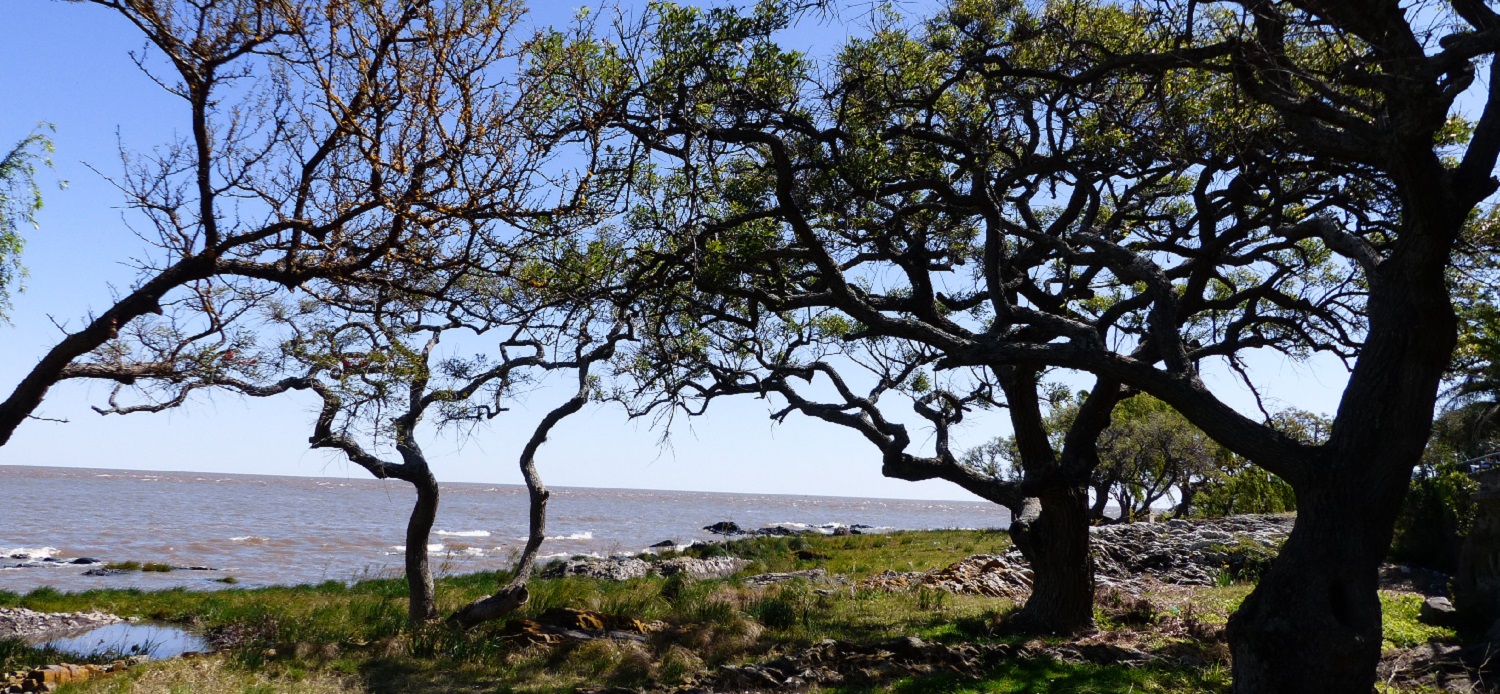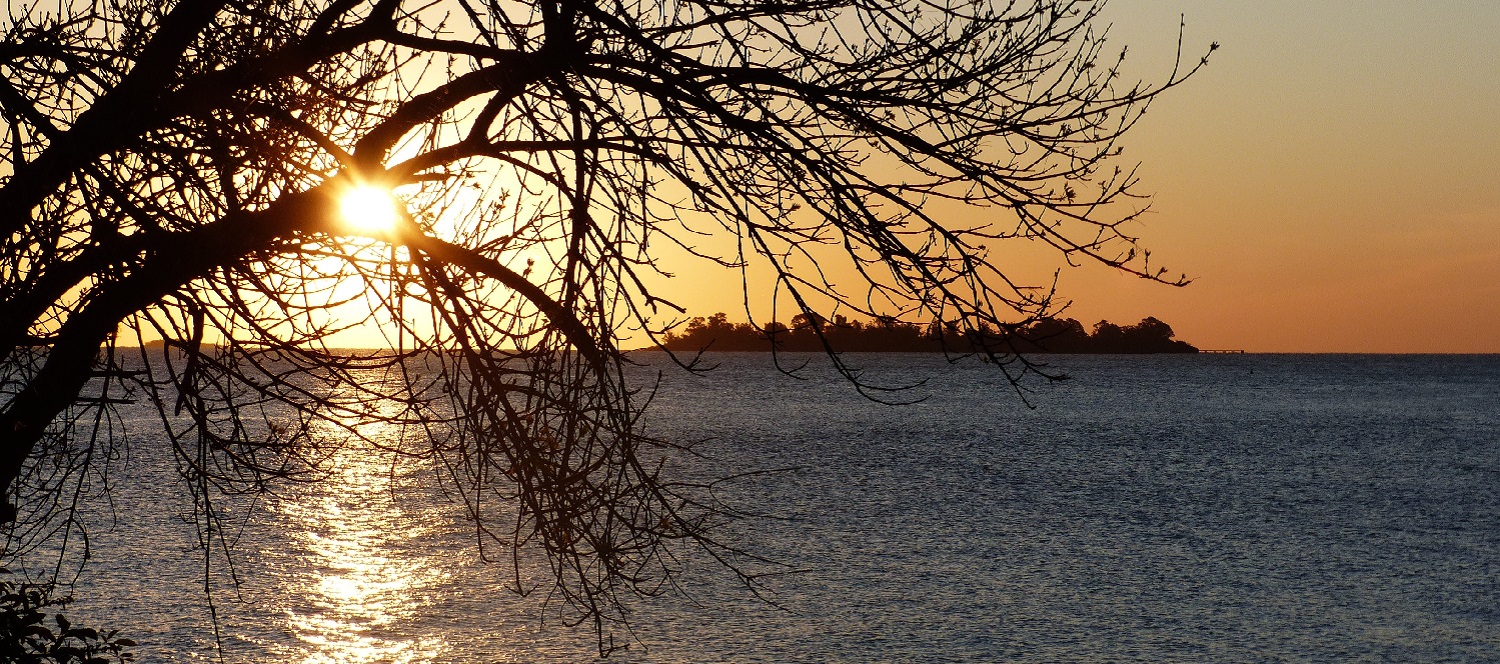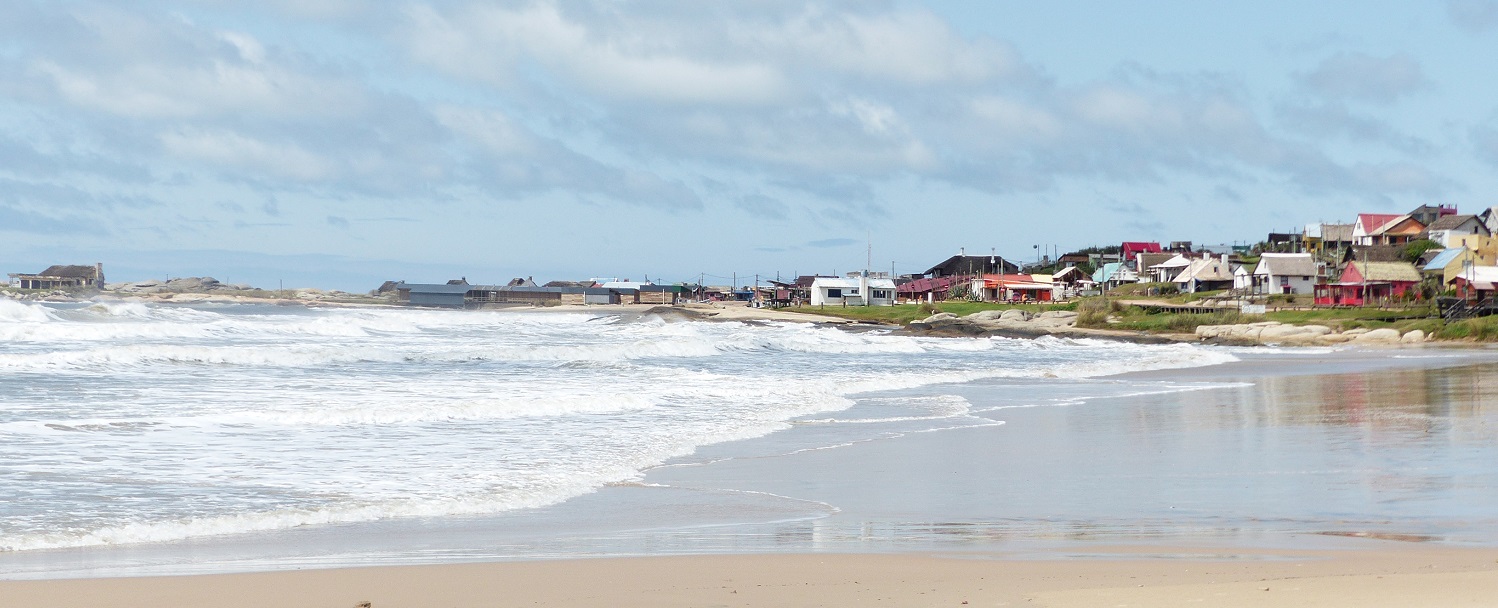“Just follow the sound of drumming,” a young dreadlocked Uruguayan told me, pointing to the south of the city. So I set off across Montevideo, Uruguay’s relaxed beach-side capital, to find its weekly Sunday evening percussion party.
It didn’t take long to track down the heavy echo of drums. Turning a corner of the old colonial neighbourhood, I was greeted by a dense fog of marijuana and joined hundreds of drummers, dancers and a good natured crowd in clapping and stamping along to the Candombe procession. Party-goers passed around litre bottles of Patricia beer, generously sharing joints. The atmosphere was electric.
I had arrived in Montevideo earlier that day to a very different scene. On a Sunday afternoon, the streets felt deserted. Tranquilo, as Uruguayans would often say, comparing themselves to their Argentinian neighbours. Calm. Chilled.
I spent the afternoon leisurely exploring the city’s plazas and beach-side promenades. Locals who were out and about all seemed to carry the obligatory mate, a caffeine-rich hot drink made from the yerba mate plant, which Uruguayans addictively suck up a straw throughout the day.
Montevideo’s top rated boutique hotel is the Alma Historica, located right in the heart of the Old Town. Helpful locals advised me on where to visit, but as I soon discovered any sites worth seeing in Uruguay are in fact found outside the capital.

Uruguay has never been the first choice of travellers to South America. The second smallest country in the region, it has long been overshadowed by neighbouring giants Argentina and Brazil. The benefit of this is that outside the short summer period (January and February), you pretty much have the whole country to yourself.
But travellers are missing out. Uruguay boasts 660 kilometres of pristine coastline, unspoilt nature reserves, abundant bird life, countless trekking and horse riding opportunities as well as a vibrant cultural heritage and party scene. It is also a very easy place to explore. The country’s compact size makes driving from place to place a breeze. Car rental prices are reasonable, as is accommodation. And the bus network is extensive, with first-class-style seating and on-board wifi. The country is a comparatively safe place to travel. In a continent known for armed violence, kidnapping and corruption, Uruguay stands out.
While Argentinians next door view Uruguay as a rural backwater, I met many well-educated Uruguayans who were quick to differentiate themselves from their arrogantes neighbours. Mauricio and Gustavo, a well-educated gay couple who I rented a lovely room from through Air bnb, proudly described Uruguay as being the most liberal, atheist country in Latin America. There is evidence to back this up. The Economist named Uruguay “country of the year” in 2013, following the President’s decision to legalise the production, sale and use of cannabis. Same-sex marriage and abortion are legal. Corruption is low.
I had arrived in Uruguay the way many tourists do: by boat from Buenos Aires. If you take a fast ferry, you can cross the Rio de la Plata and be in either the capital or Colonia del Sacramento, 150 kilometres to the west, in just two hours.

Many people visit beautiful Colonia to take US dollars out from an ATM (there is a constant quest for dollars in Argentina, whose economic woes are well-documented). But it is also a charmingly picturesque UNESCO world heritage town, which you can walk around in a couple of hours.
A climb to the top of the nineteenth century faro, or lighthouse, reveals a great view over the Old Town and Rio de la Plata. Calle de los Suspiros (“Street of the Sighs”) is a stunningly photogenic cobbled road of pink, blue and coloured Portuguese houses; it is also home to Colonia’s loveliest restaurant and boutique hotel, Charco. Take a walk along the riverside promenade at sun down and you can drink cocktails and watch one of western Uruguay’s famous sunsets, at trendy Churana Bar.

While tourists that do visit Uruguay tend to stick to the same three places – Montevideo, Colonia del Sacramento and beach party mecca Punta del Este – the real gems are further afield. I started with the country’s glorious coastline.
The easiest way to explore it is to hire a car in Montevideo. Beautiful settlements are dotted all the way along the coast from the capital to the Brazilian border in the east, with just a couple of hours drive separating them. Each has a distinctive character: glitzy Punta del Este, super exclusive Jose Ignacio (share the beach with supermodels and Rolling Stones), wildly isolated Cabo Polonio, nudist Aguas Dulces, and bohemian Punta del Diablo are just among the highlights.
In search of an off-the-beaten-track experience, I spent only one night in Punta del Este, which on a gloomy day in low season felt far from being the Miami of Latin America. However, in high season party goers from across the globe flock to the beach-side clubs and bars. A very reasonably priced boutique hotel, Atlantico, has a great lounge area by its outdoor pool.

Moving swiftly on, I headed east to Punta del Diablo, just 40km from the Brazilian border. Punta del Diablo is a charming fishing village which has made a name for itself as a surfing centre. Dirt roads with no street names, ramshackle beach shacks and mile upon mile of wide sandy beaches: Punta is still fabulously underdeveloped. Visitors here need to remember to bring plenty of cash (Uruguayan pesos) as there is no ATM, and the one supermarket acts as the central hub. Out of season, most of the bars and restaurants are closed up. But after Christmas, thousands of Argentine tourists arrive to party hard, smoke legal marijuana and score some waves.
To escape the crowds, La Viuda del Diablo is a boutique hotel set luxuriously on its own sand dune about a ten minute walk from the centre. Another option – more basic, but if you want to do as the locals do – is to stay in one of the many beach-side cabanas, which have “for rent” signs in the window, with a local mobile number scrawled out.
Besides surfing, visitors can also explore the nearby Parque Nacional Santa Teresa, a 3,000 hectare coastal national park managed by the Uruguayan army. Many people hit the hiking trails on foot and camp at night, but I decided to see it on horseback.
Fabian, a long-haired, rather wild-looking guide, arrived after lunch with two horses. We trotted out on the dust roads of the village and entered the thick forest of pines and eucalyptus of the national park. Vultures and eagles soared overhead. “If they come for us, kick your horse and ride faster,” he said with a chuckle, noticing my wary glances upwards. We reached a forest clearing and Fabian exuberantly jumped off his horse and retrieved a bottle of red and freshly baked bread from his saddle bag. He gestured towards a large tree stump with a grin: “Welcome to my office.”
Unsurprisingly, after the wine I felt pretty tranquilo on the ride back, which took us across deserted coastline. Even Fabian’s warnings that I should “duck if the army appears” didn’t curb my enthusiasm as we began to up our pace to gallop along the beach at dusk.
The next day, we headed out on a short motorbike ride to discover Fortaleza de Santa Teresa, a beautifully preserved fort started by the Portuguese in 1762 and subsequently completed by the Spanish. Huge canons and a small but informative museum bring to life what was the site of one of Uruguay’s major battles for independence. Its position on top of a hill allows for great views across the national park.
On your way back, you can also stop off at Laguna Negra, home to capybaras, flamingos, scarlet-headed blackbirds and rheas, the large emu-like bird found across Uruguay.
It seemed unlikely to me that I would find a more remote place than Punta, but I was assured by Fabian that Cabo Polonio, 60 km back west along the coast, would be just that.

Cabo Polonio is located in one of the wildest areas in Uruguay. A national park, it is home to a huge sea lion colony, with whales and dolphins as well as snakes, owls, crabs and a plethora of birds in its sand dunes.
The village has fewer than a hundred permanent residents, and electricity is available only from generators, solar and wind power. It has a strong hippy culture and rumour has it that the extreme isolation and constant sea winds drive inhabitants to drugs and madness.
Cash is essential in Cabo Polonio, and few places have internet or phone coverage, so prepare to really switch off. You can only reach the settlement by taking a huge 4 x 4, which picks visitors up from a new bus terminal on Ruta 10, where you can park or arrive by bus.

The journey is definitely part of the adventure. After bouncing our way along scrubland and pine forest for twenty minutes, we emerged on to a vast beach, stretching endlessly out to either side. Deserted, you could walk for miles and miles without seeing a soul. Up ahead in the distance, a settlement of coloured shacks on a small hill at the tip of the headland: Cabo Polonio. It was a magical moment.
On arrival, a short excursion to the lighthouse and the huge sea lion colony are a must, particularly at sun down. You can also walk all the way along the coast, up over stunning sand dunes, to the next village, which is about a three hour round trip. The scenes are idyllic apart from one solemn note: as you walk along the beach, you will encounter countless dead sea lions, washed up along the shore. You usually smell them before you see their huge carcasses. And prepare yourself for very strong winds, making a jacket necessary even in the sunshine.
After the sun goes down, you’ll need a torch to get yourself around the unlit tracks of Cabo Polonio, which is an adventure in itself. There are a few restaurants by the beach, and the most popular late night haunt is Bar de Joselo, run by blind bartender and long-term resident Joselo. Head there for a glass or five of grappa miel, a honey-flavoured brandy popular throughout Uruguay. Then stumble to bed at Posada Mariemar, a cute family-run hotel right next to the sea.
Having maxed out on hippy culture, I was keen to see another side to Uruguayan life – that of the famous gauchos. This meant leaving the coast and venturing into the country’s interior.

Gauchos, the lone cowboys found in Uruguay, Argentina and Brazil from the seventeenth century, play a key role in Uruguay’s culture and mythology. Real gauchos live a nomadic life, roaming from ranch to ranch and training wild horses. However, your best bet to experience gaucho culture is to visit an estancia, where many now work.
Estancia tourism is big business in the Argentine pampas and increasingly in Uruguay. Many estancias offer five star luxury, with high-end accommodation, horse riding, guided walks, spas and fine dining. The most historic of these is probably San Pedro de Timote, 180km inland from Montevideo, and the most stylish is surely Estancia Vik Jose Ignacio.
However, I was looking for the opportunity to experience life on a typical working ranch. Estancia Panagea, in the north, promises tourists the chance to muck in for just $60 dollars a night, all in.
Juan Manuel, the charismatic owner, greeted me at Tacuarembo bus station, after a four-hour ride from the capital. Tacuarembo is a gaucho town and also the (disputed) birthplace of Carlos Gardel, the king of tango. Tango classics blasted from the radio of Juan Manuel’s pick up truck as we headed out of town and passed endless rolling green hills on the hour journey to the ranch. He pointed out the boundaries of his family’s 4,000-acre land, where he and just one gaucho, Bilíngüe, manage 1,600 sheep, 800 cattle and 70 horses. We would be helping to herd and look after the animals during our stay.
“It is just a bloody ranch”, he warned. Juan Manuel said that Estancia Panagea was comfortable but basic, and that many tourists couldn’t get their head around the outdoor showers, lack of wifi and candlelit evenings, when the electric generator cuts out.
Upon arrival, we tucked into the first of many delicious traditional feasts, prepared by Jual Manuel’s partner Suzanne: cheese and chorizo to start, stews and asados (beef barbeque) for main, and obligatory grappa miel and wine to wash it all down. Then an early night before work began in earnest the next day.

Juan Manuel promises to teach anyone how to ride a horse in five days. We were kitted out in baggy bombachos (gaucho pants) and leather boots, before Juan Manuel gave us the lowdown on how to ride gaucho-style.
“Forget all of those cowboy films you have seen. In Uruguay, gauchos never ride along one-by-one behind each other. It’s a sign of disrespect. We ride side-by-side.” We were instructed to hold the reins very loosely in one hand, in a much more relaxed style to the European way. And off we set.
Days were spent herding and tending to sheep and cows, with a huge lunch and siesta in the middle of the day. We were encouraged to stretch with heated games of basketball and badminton in the garden. After five busy days, I was sad to leave ranch life. We took a final ride out to look at the view across the family’s land – nothing but green fields and roaming animals.
Juan Manuel trained as a vet in Montevideo, but said that his time in the capital was enough city life for him. “In cities, we try to control everything and forget that there is something bigger than us. But out here we are surrounded by nature, and we realise that we aren’t masters of the universe.”
Standing out there atop the hill, you forget that the city exists. Like so much of my time in Uruguay, todo tranquilo.
